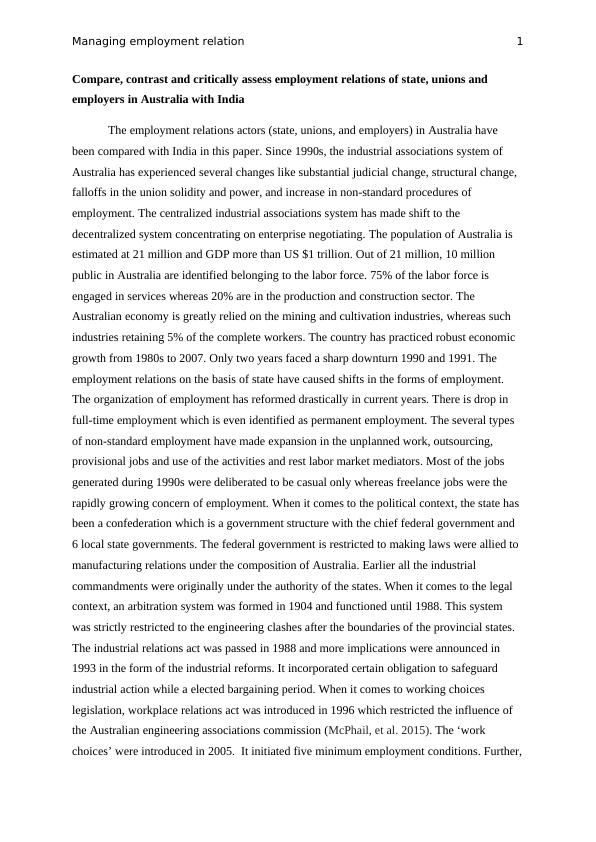Employment Relations in Australia and India
8 Pages2612 Words334 Views
Added on 2022-11-18
About This Document
This paper compares and contrasts the employment relations of state, unions, and employers in Australia and India. It discusses the evolution of unions and employer relationships in both countries and the political and legal factors that shape them. The paper also highlights the decline of unions in Australia and the role of employer organizations in both countries.
Employment Relations in Australia and India
Added on 2022-11-18
ShareRelated Documents
End of preview
Want to access all the pages? Upload your documents or become a member.
HRMT20029 International Employment Relations : Assignment
|10
|2879
|123
Industrial Relations and Stakeholder Participation in Australia
|28
|7409
|321
HRM523 Advanced Studies in Industrial Relations
|8
|1901
|126
Arbitration and conciliation Question and Answer 2022
|10
|2736
|30
Decline of Trade Union Membership in Australia
|8
|2114
|41
The Coming of Global Working Class 4 India: Neoliberal Industrialization, Class Formation and the Coming of Global Working Class
|9
|2668
|286



